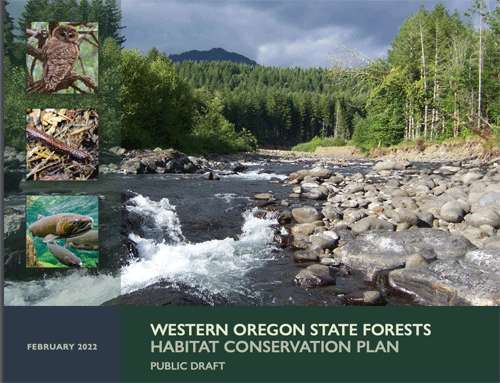National Audubon Society: Our conservation work focuses on five key
strategies, supported by science, advocacy, and education.
Conservation
By protecting birds, we’re also safeguarding the Western hemisphere’s great natural heritage for future generations, preserving our shared quality of life and fostering a healthier environment for us all.
Learn More About Our Strategies
AdvocacyAudubon is a respected and influential voice on public policy issues, from town halls to the U.S. Capitol. We have the power to convene diverse stakeholders to solve even the toughest problems.
Policy Issues & Action
No other conservation organization matches the size, reach, scale, influence, diversity, and creative energy of our chapters, nature centers, volunteer leaders, and partners. The Audubon Network
MWBA Current Letters of Support, Updates, and Recent Activities
Updates
Oregon Transportation Plan
Once finalized and approved, the updated Oregon Transportation Plan will guide the transportation system for the next 20 years. ASC (now MWBA) is one of ten Oregon Audubon chapters that provided comments on the plan. Read the comments here.
Oregon Transportation Plan 2023
Northern Spotted Owl
On August 23 the US Fish and Wildlife Service closed the public comment period on identifying the range of issues they should consider (called scoping) as they begin plans to implement the widespread lethal removal of barred owls on federal lands. This EIS (Environmental Impact Statement) will study the effects of the proposal and those of reasonable alternatives, including taking no action, and within the required review process. Lethal removals at the experimental level have demonstrated some measures of success with a limited hope of extinction within the foreseeable future.
Audubon comments, while first clearly acknowledging ethical concerns of killing members of one species to benefit another, include the need to consider reclassifying these owls as “endangered,” noting that habitat needs for older and larger contiguous suitable landscapes in the long term hold greater importance to species persistence, and that continued monitoring and ongoing external review are needed to assure efficacy of a lethal control program. Those comments also acknowledge that state and private forest land management has an inseparable function in the conservation of this species.
Please feel welcome to contact me on these and other issues you care about. ~ Jim Fairchild, Conservation Chair Email
Protections for Greater Sage-grouse
ASC was asked to sign-on to a letter to support greater protections for the Greater Sage-grouse. The current House and Senate bills include solid funding levels for sagebrush ecosystem protections, and good report language directing agencies to protect the sage-grouse and its habitat. However, a rider has been attached that rider has prevented the U.S. Fish and Wildlife Service from taking action to protect the Greater sage-grouse under the ESA despite continued population declines and habitat loss. The current House and Senate bills do not include the rider, and we want to keep it out of the final bill.
OSU-MacDonald Dunn Research Forest
After taking more than two years developing a revised Forest management Plan for the OSU-owned MacDonald-Dunn Research Forest, the College of Forestry has now restarted a planning process, separating a faculty plan development committee from an invited stakeholder advisory committee. Those two independent committees should be informed by several planned “community listening sessions,” the first to happen 31 August.
As an identified stakeholder representing our Chapter interests, I will do my utmost to influence the Plan outcome, and to raise concerns. The first is that these and other college research forests are envisioned to produce net revenue for general college operations. This has led to repeated violations of previous plans when increased logging is used to make up college revenue shortfalls, either during an economic downturn (2008), or to cover capital improvement cost overruns (new Peavy Hall). Both these events led to greatly increased logging on the MacDonald and Blodgett Research Forests, entirely compromising those plans. My second? Given this history, will the College incorporate stakeholders and community concerns, and then abide by its own Plan? This is a public asset for the benefit of both the university and the state of Oregon, and I believe the public should be able to pursue legal remedy when the College can’t abide by its own terms of management. See Oregon Revised Statutes 352.002, 392.025, 352.039.
October 11, 2023: Planners came up with several management strategies. Within each of those there could be different scenarios across the landscape. Over the summer the College farmed out the first computer modeling effort of what these alternatives might look like. Delays have held up any review by the two advisory bodies appointed to this work. Release for public comment now looks to be after mid-November. Like Elliott planning, these delays further compress any period for reasonable community evaluation. Jim Fairchild continues to serve on the Stakeholder Advisory Committee as a representative for ASC. OSU-Mac Forest Plan
Changing the Name of National Audubon Society
A National Audubon Survey was available for individuals thru Wednesday 10/28 on National’s use of John James Audubon’s name. Link
When will a decision be made? The current plan is to synthesize the survey data and present it to the Board Task Force in December ,after which the task force will deliberate, culminating in a recommendation to the Full Board in February 2023.
What does this mean for my chapter? We recognize the power of a network unified in name and we recognize the power of a chapter’s self-definition. As independently incorporated entities, each chapter has the autonomy and authority to make decisions in respect to their naming as best serves their needs.
Action Items
None to report
Current Issues
Future Wind Development off the Oregon Coast
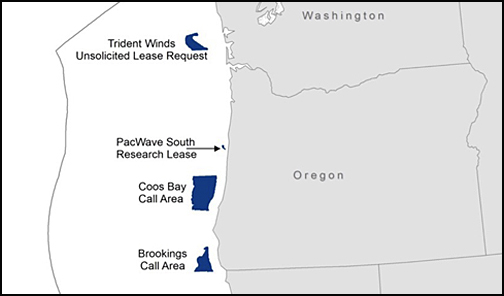
In response to a letter from the Bureau of Ocean Management (BOEM) requesting specific information about concerns with future siting of wind energy development projects off the Oregon Coast, ASC and 18 partners provided specific recommendations, outstanding concerns, and further recommendations.
“Floating offshore wind (FOSW) energy presents Oregon with an option in the transition away from polluting fossil fuels. It represents an opportunity to address the immense and urgentc hallenges posed by our climate crisis, which is already impacting marine life. However, the West Coast’s renowned California Current Large Marine Ecosystem (CCLME), with its rich upwelling waters, is a crucially important natural resource with significant cultural, ecological, and economic values that must be carefully considered through all phases of siting, design, operation, and eventual decommissioning of any industrial energy development projects.”
October 30, 2023: ASC has endorsed an extensive comment being finalized by conservation, fishery, and tribal groups to the Bureau of Ocean Energy Management, and will also make that final comment available on our website.
Letter to Commission
Habitat Conservation Planning for State-Owned Forests – Draft EIS June 1, 2022
Link to Background and Key Points on Western Oregon State Forest Habitat Conservation Plan 11/27/2022
The final draft habitat conservation plan EIS (Environmental Impact Statement) for Western Oregon State Forests was endorsed by ASC and twenty other groups. The Oregon Department of Forestry submitted the draft plan to the National Marine Fisheries Service and the U.S. Fish & Wildlife Services in support of its application for Endangered Species Act (ESA) incidental take permits (ITPs) authorizing otherwise prohibited negative impacts to species that arise incidental to covered activities under ODF’s control, primarily logging and related activities including roads. Link to document
Coffin Butte Landfill Expansion
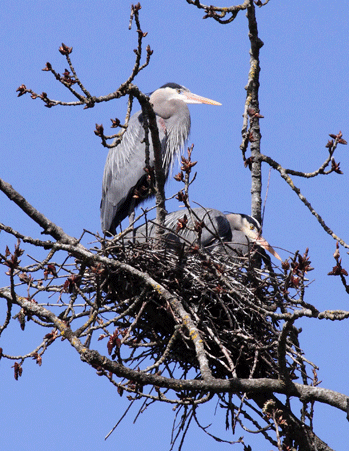
In 2021, the ASC Conservation Committee provided formal comment on the impacts on wildlife of the request by Republic Service of Arizona to expand the regional landfill at Coffin Butte. The expansion will allow an unlimited amount of waste annually at the site & will disturb nesting habitat for Great Blue Herons.
October 11, 2023: Republic Services has not yet filed for another Conditional Use Permit seeking to expand the landfill. Efforts by independent groups continue to broaden community understanding of the current and future impacts of hosting a regional landfill in Benton County. Benton County itself is not willing to talk about expansion. Valley Neighbor factsheet link
Protecting Native Rainforests

Recently passed Oregon legislation will provide greater protections for the Elliott Forest (SB 1546) and for private lands through required revisions to Forest Practices rules (SB 1501). And while ASC refutes the need for continued post-fire logging in complex forests in the Santiam State Forest, or the need to maximize timber revenues for counties in their interpretation of Oregon’s Greatest Permanent Value rule, we will continue to participate in forest planning efforts for the Elliott, state and federal forest lands, and for better-informed management for OSU’s various research forests through direct advocacy, lobbying, and education.
October 30, 2023: Legislation allowed the creation of the largest research forest in Oregon, with OSU College of Forestry managing what is now the Department of State Land ownership, under supervision by a governor-appointed Elliott Forest Authority. The 800+ page forest management plan released on October 8th for public comment has been extended to November 8th. Recent significant changes concern both the conservation community and College scientists. Planning delays have created an extremely compressed time frame for public comment, in part because under that legislation the entire scheme expires if the Plan and its accompanying federal HCP+incidental take permit are not finalized before 2024. ASC (now MWBA) plans to endorse comments by the conservation community.
Old Peak Road Logging – Corvallis Watershed
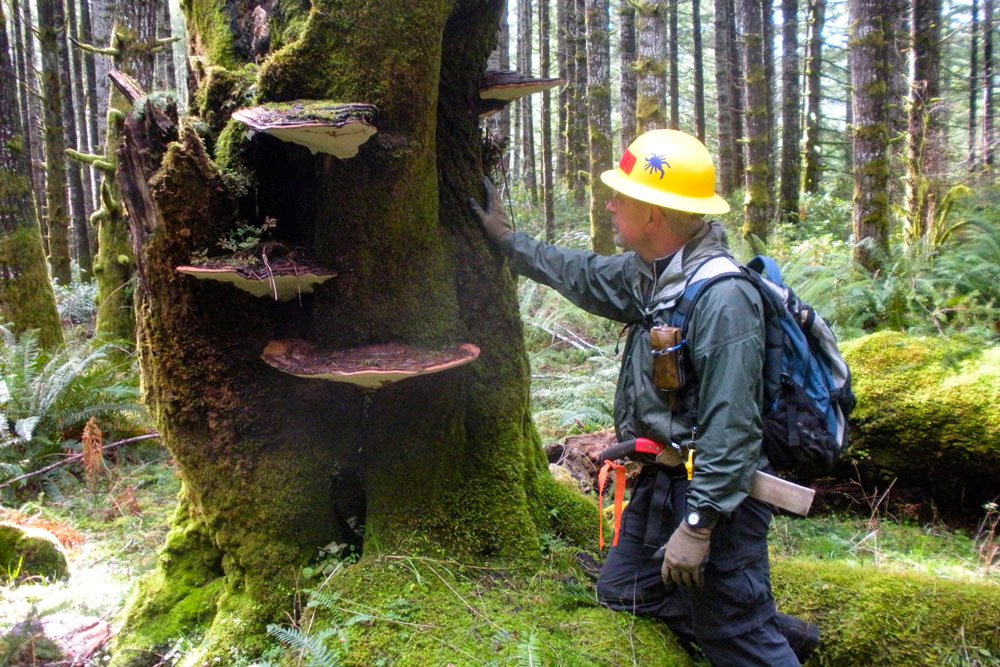
ASC signed a letter with other groups to urgently recommend that the City of Corvallis immediately suspend all logging and forestry-related activities in the city-owned portion of the Corvallis Municipal Watershed. Our members represent many hundreds of Corvallis citizens and area residents who, along with all their community, rely on the remarkably clean and dependable water supply from its Rock Creek watershed on the east slopes of Marys Peak. This community expects the City to act to minimize our contribution to the worsening climate. And it requires the City to engage its community in governance, rather than in direct contravention of applicable state rules.
October 30, 2023: Yes, drier and warmer summers can reduce summer water supplies, but older intact forests, even without a summer snowpack, moderate stream flows by storing and then releasing more water through longer periods of drought. The cyclical growing and harvesting of trees, used by the Siuslaw National Forest and the City of Corvallis in the Rock Creek watershed, still practice forestry to produce wood and revenue not water or biodiversity. This must be replaced by management focused on producing the highest quality water at the lowest cost, rather than the most water regardless of treatment cost. This transition would restore lost biodiversity and begin decreasing the city’s significant carbon footprint.
Climate Change and Northwest Forests
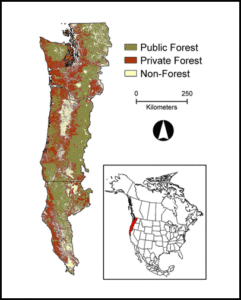
Corvallis, Lincoln City, and Salem Audubon chapters join others in requesting State Forestry to do a deep dive into fully incorporating the Oregon Climate Change & Carbon Plan into Northwestern State Forest Management Planning. Link
Critically Important Saline Lakes
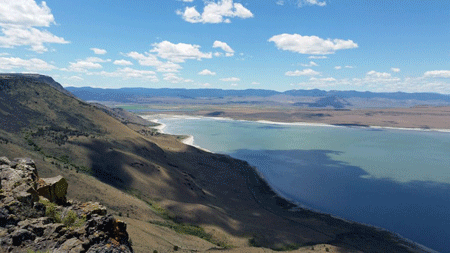
Lake Abert and other western saline lakes are critically important to Wilson’s Phalaropes, Eared Grebes, American Avocets, and Snowy Plovers. Both human resource demands and climate change are accelerating the loss of these habitats and bird populations. Will Oregon take a leadership role in protecting Lake Abert after decades of neglect? Audubon entities join others in requesting our Governor to take action.
Unfortunately, water levels in Lake Abert once again reached critically low levels in 2021 following a similar occurrence during the 2014-2016 timeframe. To protect and restore this vitally important ecosystem in Oregon’s high desert, we request the Governor and state agencies take actions suggested in the letter. Link
Resources for Corvallis Watershed Management

Friends of the Corvallis Watershed hope to provide background information at this website, public testimony, and scientific literature supporting greater protection for the area. It is often logged to provide revenue for water infrastructure improvements, the latest revenue demand of $170 million dollars for a renovated water collection and treatment plant on Rock Creek on the east slopes of Marys Peak. The website is a work in progress. https://www.friendsofthewatershed.org/
Members of the Public Works Watershed Operational Advisory Committee have been tasked by City Council to update the current forest management plan. What is missing from the current plan? Forest carbon, mitigation or adaptation in the face of climate change, and sustaining a now dwindling summer water supply.
Task Force meetings are currently scheduled for the fourth Wednesday of each month, held at 500 SW Madison, 5pm at the Madison Avenue Meeting Room. The first 30 minutes of each meetings is set to allow public testimony, virtually or in person.
October 11, 2023: “Friends of the Watershed” continues to pressure the City Council to reclaim its authority to determine policy from the Public Works Dept., and are in discussion with journalists interested in telling the story of municipal water supplies across the Oregon Coast Range. Jim Fairchild is still unable to recover $355 of ASC (now MWBA) conservation program funds used to pay for revenue data it didn’t ask for, or to convince Corvallis to apply that amount to what has now been clearly agreed to provide, at an estimated $510. Without response of further assistance by the Oregon Public Records Advocate, Todd Albert, I will have to provide documentation and file an appeal with our Benton District Attorney, both on the fee confiscation and the refusal by Corvallis to provide any explanation for not granting any fee waiver or reduction.







